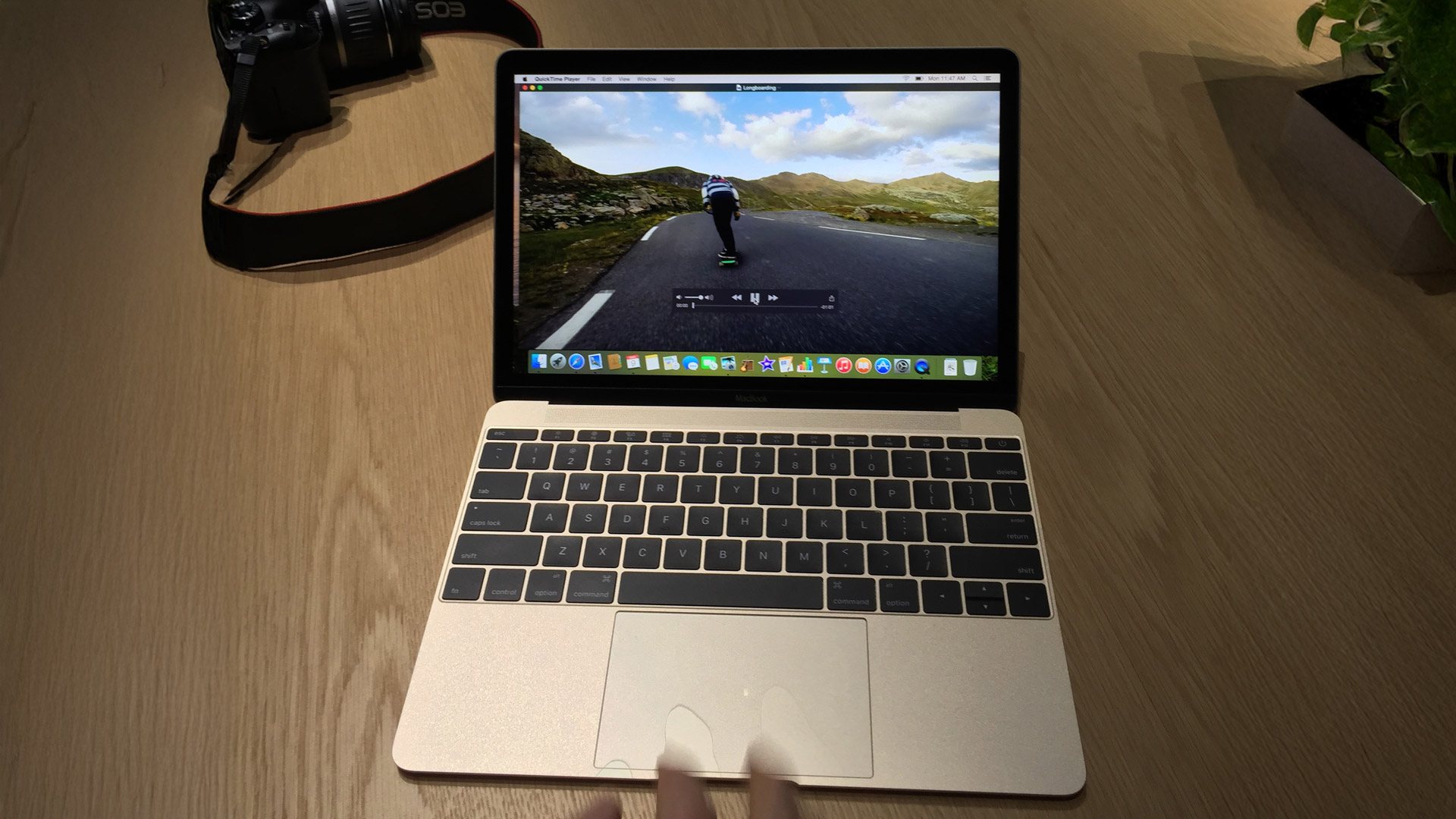The gold, 12-inch MacBook was a miracle, and now Apple has a chance to revive it with the A18 Pro
A $599 MacBook 12-inch FTW

The affordable Mac you want is not a Mac Mini, and it's not a budget iMac. It's a 12-inch MacBook. Trust me.
Rumors that Apple might make an affordable, multi-colored MacBook based on the A18 Pro chip sparked considerable excitement and ignited a hope in me and others that it could mark the return of that classic 12-inch MacBook, last seen running an Intel Core i5 CPU
Unveiled a decade ago, the gold-finished 2lb, full-sized keyboard-sporting MacBook was, for its time, an engineering marvel. Apple arguably rewrote its laptop playbook to create the system.
Shortly after launch, I spoke to the marketing head Phil Schiller and Apple's Mac and iPad lead (and now Apple's senior vice president of Hardware Engineering) John Ternus about all Apple did to make the portable wonder.
The pair spread out before me things like a multi-tiered battery and something called the "speaktenna", which was basically a combination of Wi-Fi and Bluetooth antennas and a speaker system.
"We ended up with a group of antenna engineers who know more about speakers than any other antenna engineers and a group of speaker engineers who knew more about antenna design than just about anyone else in the world," Ternus told me.
There was a passion around the product that rivaled that of the Apple Watch, which launched alongside it.
Sign up for breaking news, reviews, opinion, top tech deals, and more.
The 12-inch MacBook was also a bit of an odd duck. It was lighter than a MacBook Air, but it was not an Air. It didn't have the same number of ports. In fact, there was just one USB-C port running at USB 3.1 speeds (pokey compared to the Thunderbolt 4 ones you find on today's MacBook airs). Oh, and did I mention that the port handled charging duties, too?
Encrusted with components on both sides, the 12-inch MacBook's motherboard was small enough to fit in the palm of my hand. Everything about the MacBook's components was built in support of its enviable proportions.
At its thickest part, it was, at 0.35cm, thinner than the current MacBook Air. I love the current 13-inch MacBook Air (M4), but I'd be lying if I said I wouldn't enjoy carrying around an even lighter, thinner, and smaller cousin.
It's fair, though, to ask why the market needs such a system now.
First, let's imagine what the MacBook 12-inch 2026 might be. It would have:
- An A18 Pro CPU
- 13-inch LED-backlit Retina display
- 16 GB of memory to support Apple Intelligence
- 128 GB of on-board storage
- 30GB of free iCloud storage
- A fanless design
- A MagSafe Charge port
- A USB-C style Thunderbolt 3 port
- Recycled aluminum enclosure
- A full-sized magic keyboard including Touch ID
- A 4-inch Force Touch Trackpad
Design-wise, the 12-inch MacBook A18 Pro would align closely with the MacBook Air line. No more wedge, instead two flat panels squeezed together into a 0.35cm-thick slab.
Granted that everything above is guesswork, but I believe that configuration would fit neatly into a $599 package (maybe even a $499 one).
Nothing here is new, and the A18 Pro is plenty powerful and efficient to run such a system.
The benefit, obviously, is an affordable, yet nearly full-sized portable that is a complete system. I am well aware you can buy an M4 Mac Mini for $599, but you still need to buy a mouse, keyboard, and screen. This, by contrast, would be the full Apple MacBook package at, finally, an affordable price.
You might have also noticed the rather paltry base storage. That's to help keep costs down. It's buttressed, though, by something Apple desperately needs to do: offer more versatile and forgiving iCloud storage options.
The usual 5GB of free storage is not enough, and I think the extra 30GB will offset the limited local storage, moving those who are on the fence about the 12-inch MacBook into the must-buy territory.
Give them what they want
If Apple balks at reintroducing the confusing "MacBook" name, especially when it's smaller and lighter than the MacBook Air, they could call it the MacBook Air LT (for light) or MacBook Air A (for its A-series chip).
One need only look at Walmart for evidence that consumers want such a system. It's been selling the old-school design MacBook Air M1 for $699 and now $649 for years. People are desperate for a truly affordable Mac, but they are probably tired of the growing performance compromises tied to the aging M1 chip.
The A18 Pro will sing in a tiny 12-inch laptop, and the system's incredibly small proportions will make it a hit with those who thought they might go for a lightweight iPad with a Magic Keyboard Folio, mainly because they thought it wouldn't weigh down their backpack.
Apple has learned, thanks to Apple Silicon, so much about building lightweight and performant systems that it makes sense to extend the MacBook idea in new and maybe unexpected directions.
A revived 12-inch MacBook would sell like hotcakes and pave the way for more fresh ideas, like a 12-inch MacBook Air running an M3 chip. That one could sell for $699.
You might also like
- Apple could launch a cut-price MacBook powered by an iPhone chip, new report claims – here’s why that would be a massive hit
- Constantly dismissing notifications on your Apple Watch? You’re going to love Apple’s watchOS 26 latest gesture
- 11 great uses for a smart plug: upgrade all the 'dumb' devices in your home for an easier life

A 38-year industry veteran and award-winning journalist, Lance has covered technology since PCs were the size of suitcases and “on line” meant “waiting.” He’s a former Lifewire Editor-in-Chief, Mashable Editor-in-Chief, and, before that, Editor in Chief of PCMag.com and Senior Vice President of Content for Ziff Davis, Inc. He also wrote a popular, weekly tech column for Medium called The Upgrade.
Lance Ulanoff makes frequent appearances on national, international, and local news programs including Live with Kelly and Mark, the Today Show, Good Morning America, CNBC, CNN, and the BBC.
You must confirm your public display name before commenting
Please logout and then login again, you will then be prompted to enter your display name.